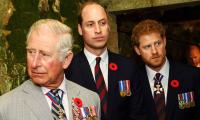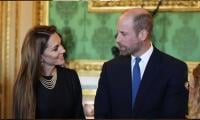Pakistan, India agree to pull back troops to peacetime positions by 30th, say officials
Move is seen as critical next step following ceasefire that has largely held since hostilities escalated earlier this month
ISLAMABAD: Pakistan and India have reached a mutual understanding to reposition their armed forces back to peacetime deployments along the Line of Control and international border by May 30, according to senior officials familiar with the development.
Military leadership from both countries, particularly the Directors General of Military Operations (DGMOs), are actively coordinating the phased pullback, sources told The News on condition of anonymity due to the sensitivity of the matter.
The move is seen as a critical next step following the ceasefire that has largely held since hostilities escalated earlier this month. Officials described the de-escalation as a “continuation of confidence-building measures”, marking a potential thaw after weeks of heightened military alert.
“The return to normal military positions is part of the second phase of the ceasefire framework”, a senior government source said, adding that the decision was facilitated by diplomatic efforts from the US and other concerned nations.
The escalation began after what Pakistan has said were acts of aggression by India, prompting both armies to move forward from their usual positions and assume combat-ready postures along the border. The current plan to revert to peacetime deployments signals a tentative return to regional stability.
Neither the Pakistani nor Indian governments have officially commented on the troop movements, but the coordination between the DGMOs indicates a rare instance of direct military engagement to reduce tensions.
-
 Harry Deserves Top Protection As King Charles’ Son, Prince William’s Brother
Harry Deserves Top Protection As King Charles’ Son, Prince William’s Brother -
 Meghan Markle Receives Key Advice As Experts Warn She’s Doing Too Much
Meghan Markle Receives Key Advice As Experts Warn She’s Doing Too Much -
 Kelly Clarkson Weighs In On Life Without The Father Of Her Children
Kelly Clarkson Weighs In On Life Without The Father Of Her Children -
 Paul Mescal, Gracie Abrams Committed To 'long Distance' Relationship: Source
Paul Mescal, Gracie Abrams Committed To 'long Distance' Relationship: Source -
 Street Fight Turns Bloody As Innocent Bystander Shot In The Face
Street Fight Turns Bloody As Innocent Bystander Shot In The Face -
 Tom Blyth Shares His Two Cents On The Importance Of Rom Coms
Tom Blyth Shares His Two Cents On The Importance Of Rom Coms -
 Jennifer Lawrence Opens Up About Her Most Demanding Film Role
Jennifer Lawrence Opens Up About Her Most Demanding Film Role -
 Nikki Glaser Shares Set Of Rules For Roasting Stars At 'Golden Globes'
Nikki Glaser Shares Set Of Rules For Roasting Stars At 'Golden Globes' -
 Prince Harry Risks Overshadowing Invictus Games With Royal Drama
Prince Harry Risks Overshadowing Invictus Games With Royal Drama -
 Daily Fish Oil Supplements Intake May Reduce Cardiovascular Risks, Heart Problems
Daily Fish Oil Supplements Intake May Reduce Cardiovascular Risks, Heart Problems -
 Pamela Anderson Gets Honest About New Exciting Role
Pamela Anderson Gets Honest About New Exciting Role -
 Alexander Skarsgård Reveals Harsh Views On Fame
Alexander Skarsgård Reveals Harsh Views On Fame -
 Prince Harry’s Anxiety About Archie, Lilibet’s Safety In School Comes Out: ‘There’s Guns!’
Prince Harry’s Anxiety About Archie, Lilibet’s Safety In School Comes Out: ‘There’s Guns!’ -
 Charlie Hunnam Reveals Why He Has Stopped Reading Reviews: 'I Don't Need'
Charlie Hunnam Reveals Why He Has Stopped Reading Reviews: 'I Don't Need' -
 Prince Harry’s Dream To Bring Archie And Lilibet To UK Faces Uncertainty
Prince Harry’s Dream To Bring Archie And Lilibet To UK Faces Uncertainty -
 Marvel Star Makes Major Remarks About Key Comic Superhero
Marvel Star Makes Major Remarks About Key Comic Superhero




